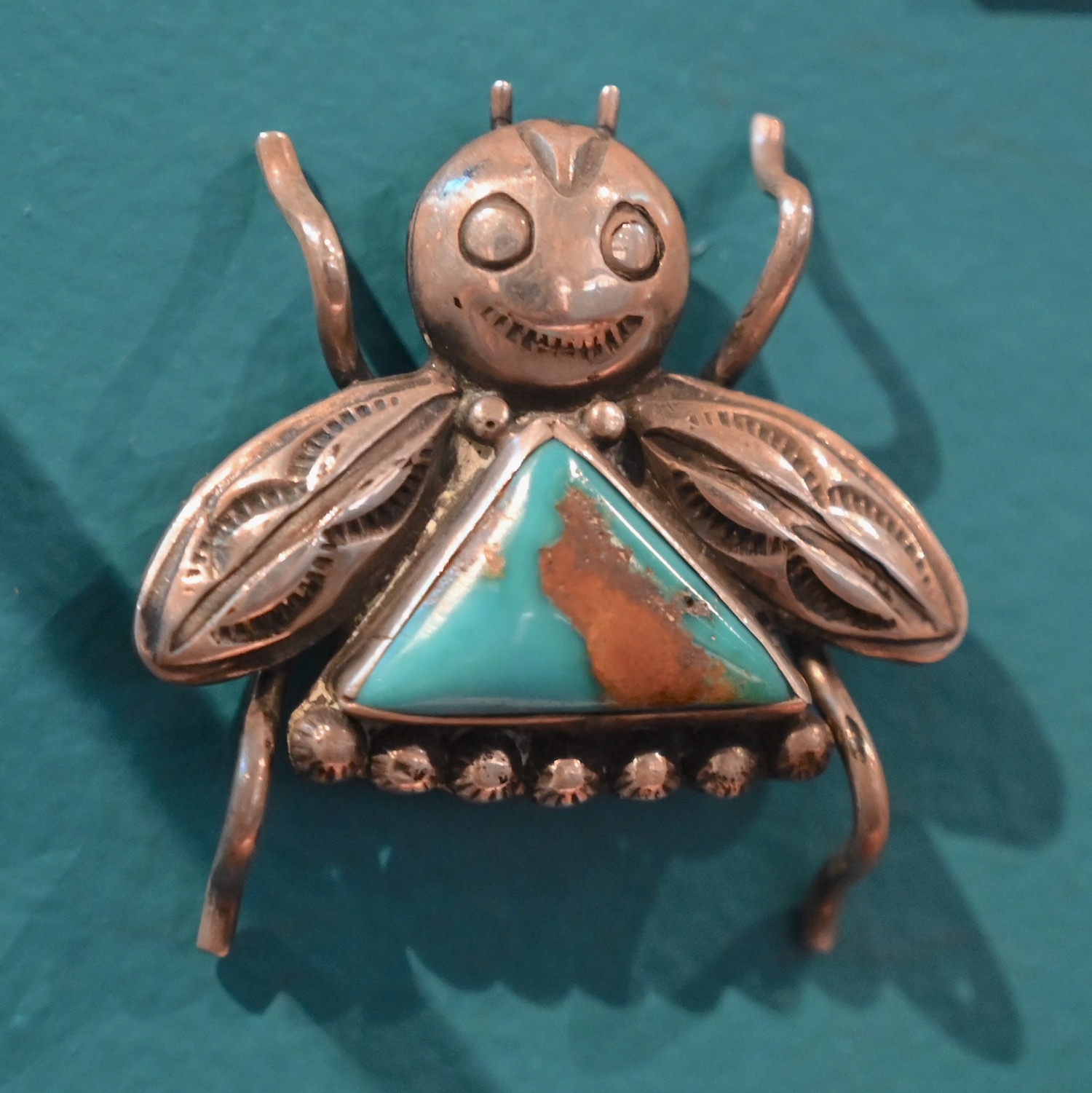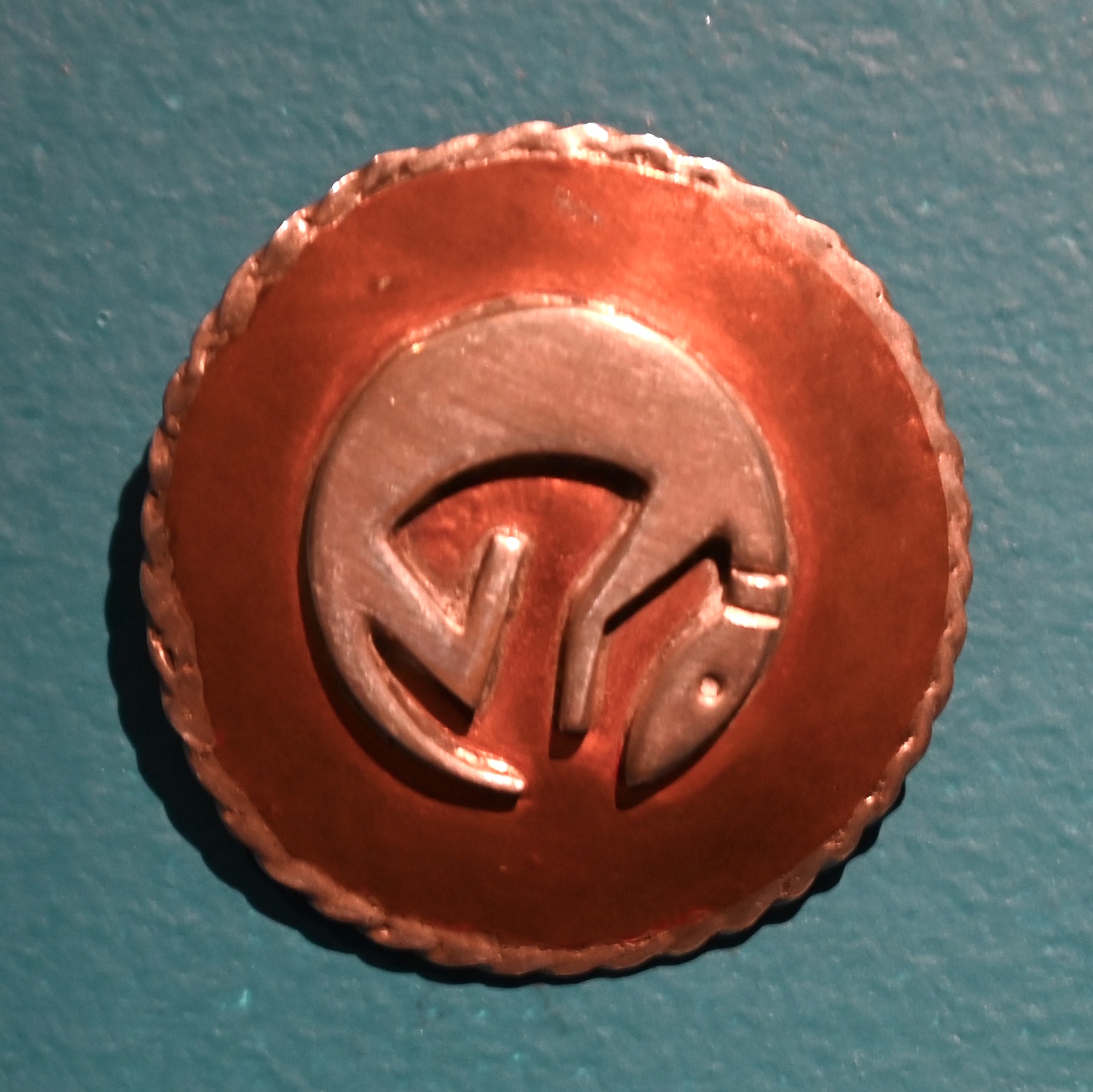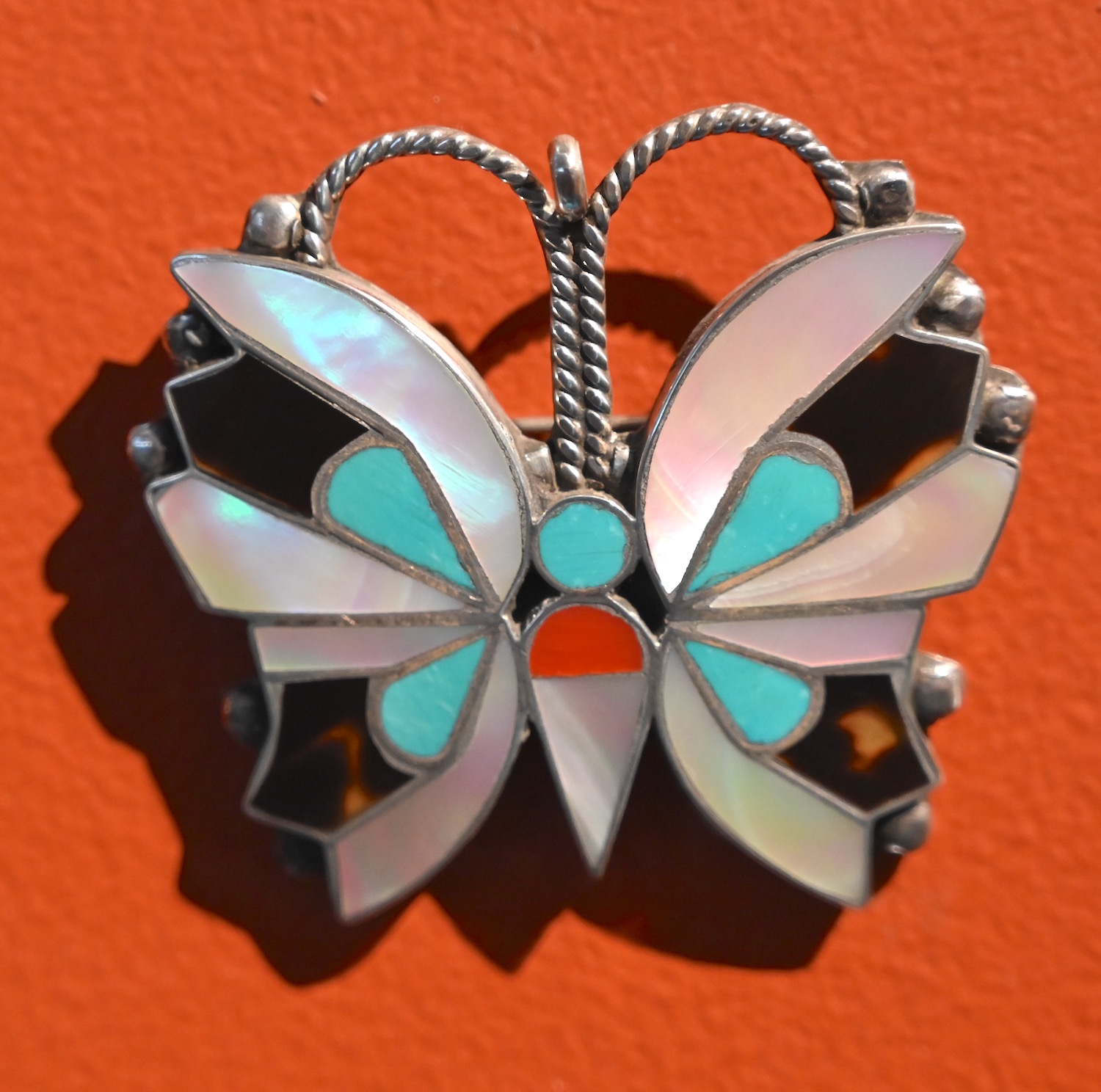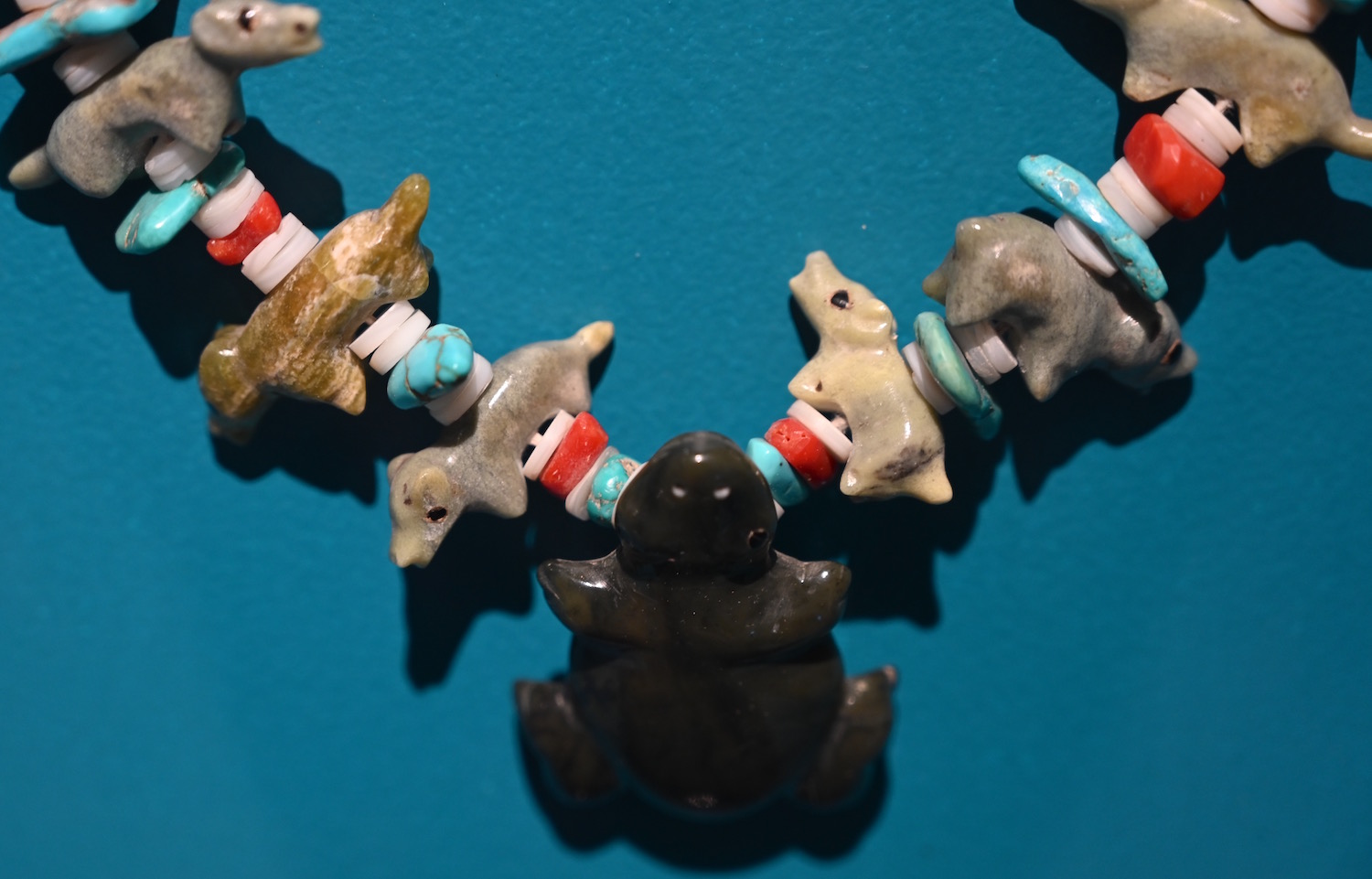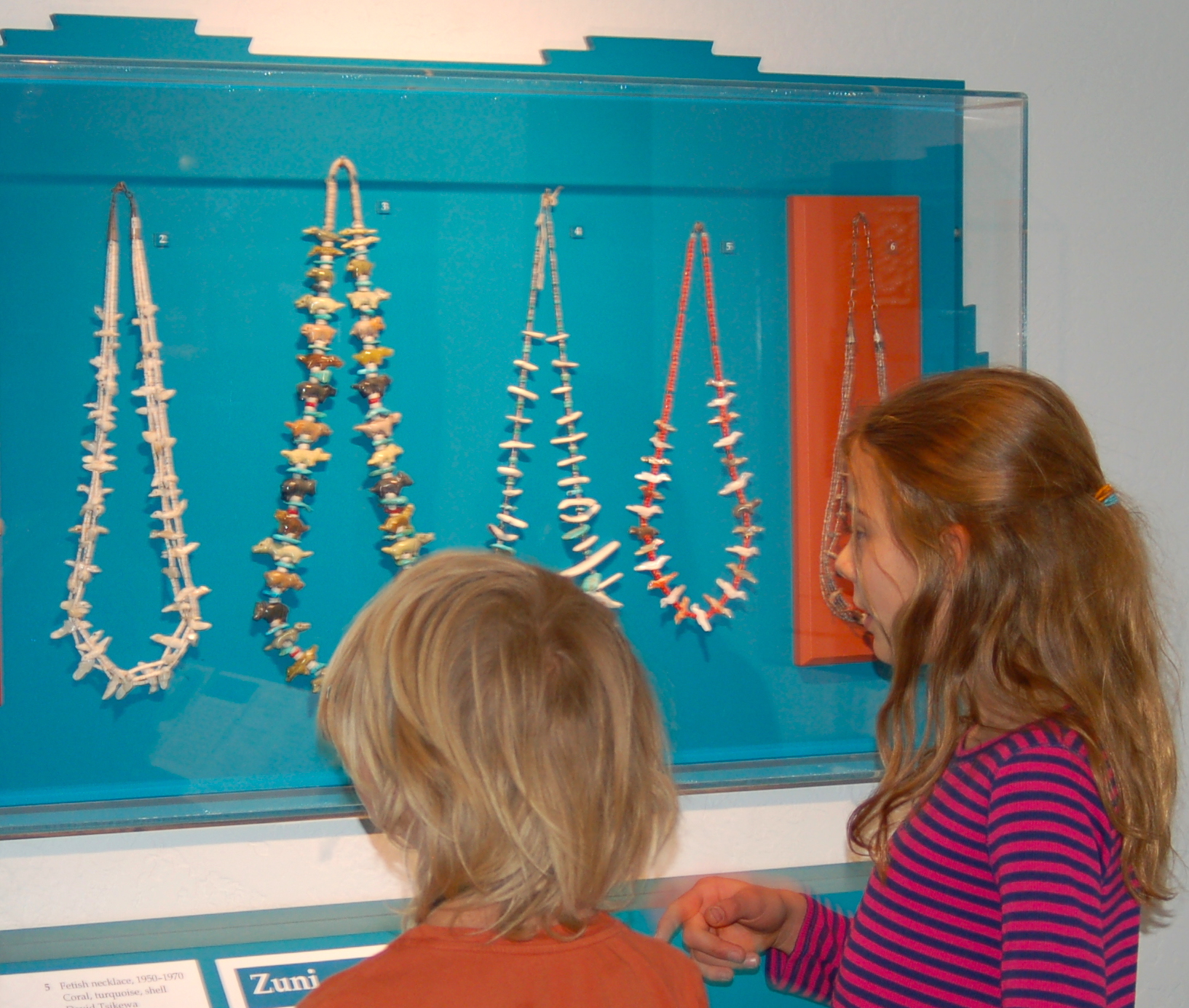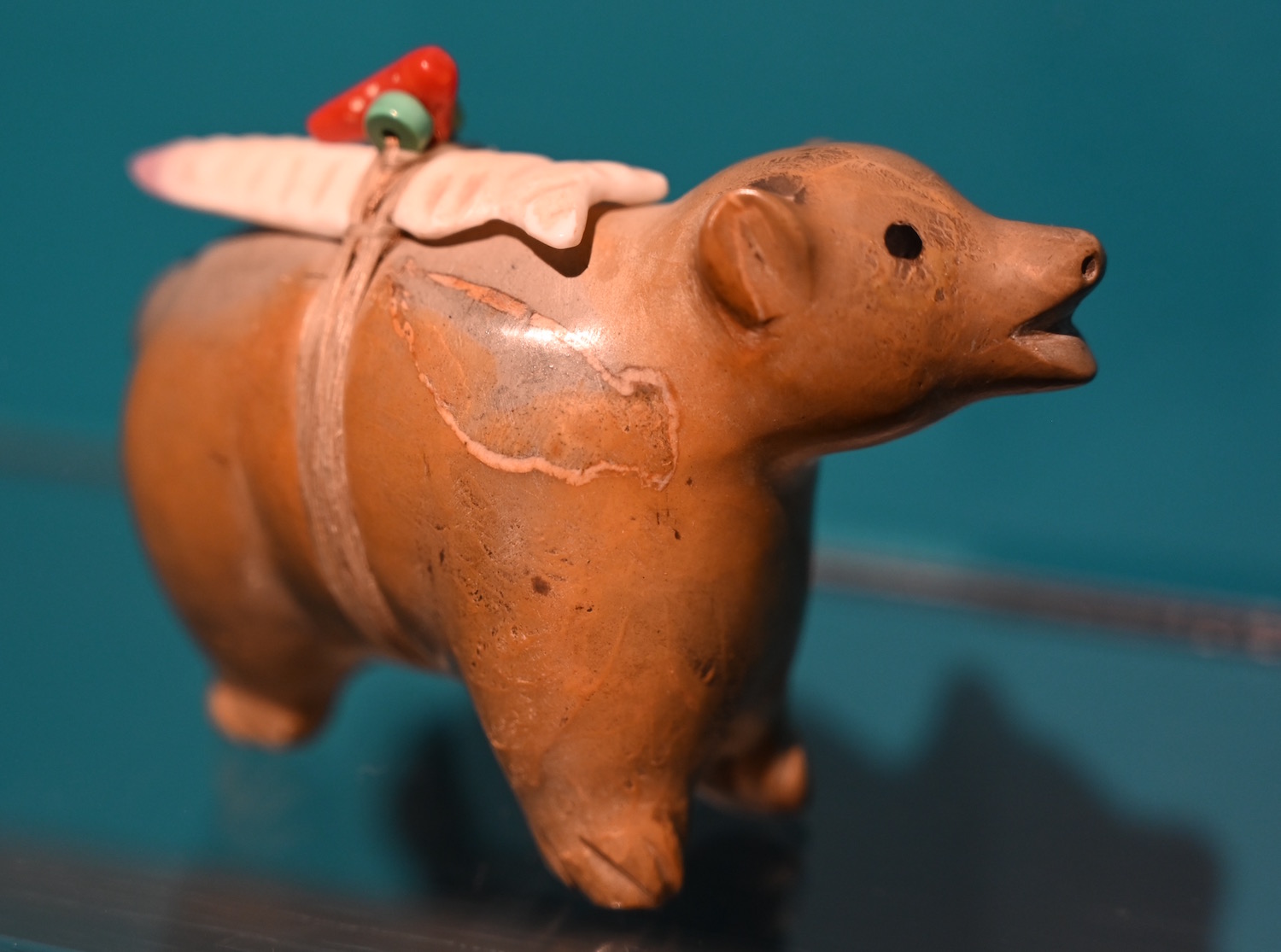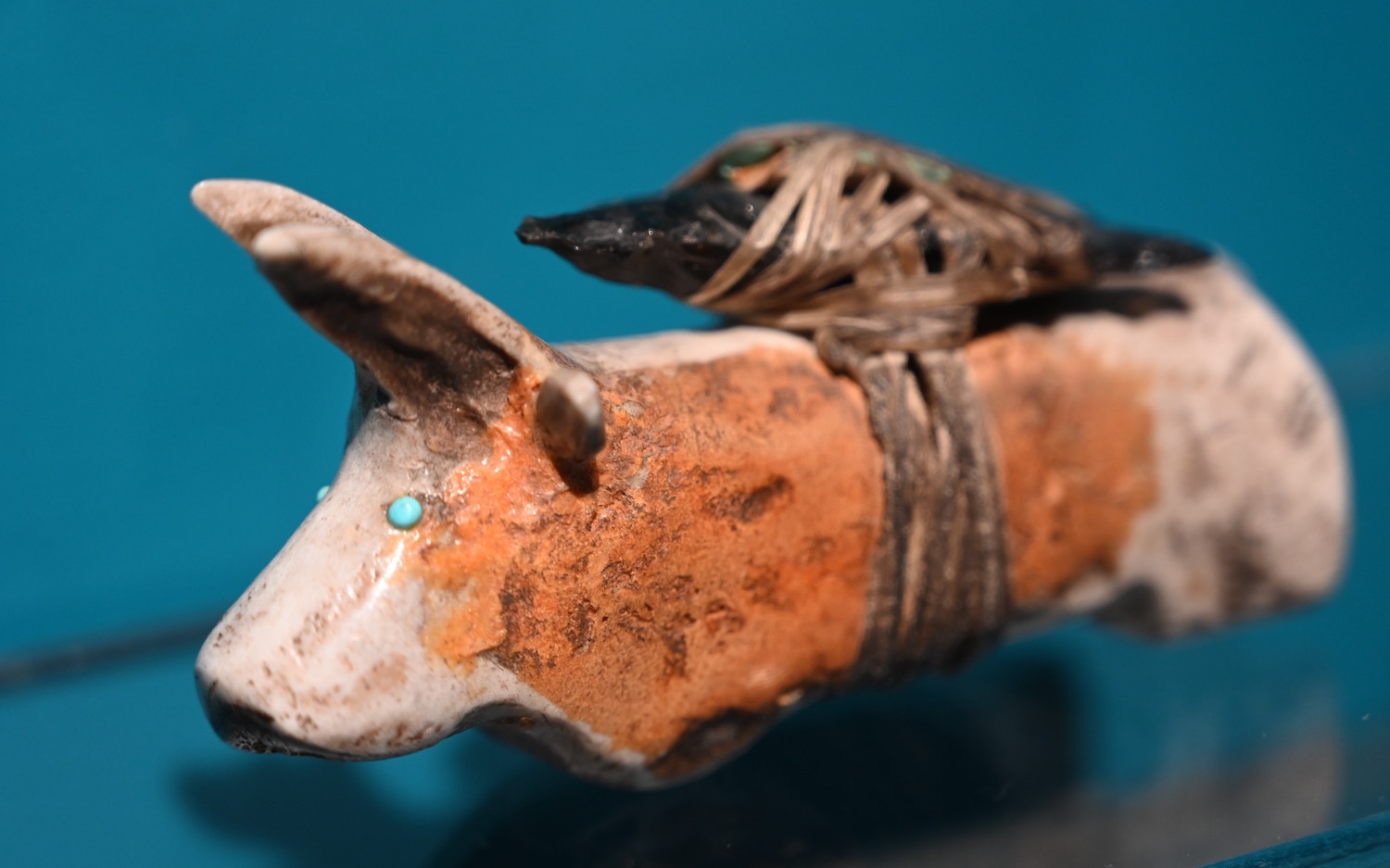
Southwestern Native American Jewelry
Ongoing
About 170 pieces of jewelry glitter in this gallery, crafted from colorful stones and silver by Hopi, Zuni, Navajo, and Rio Grande artisans.
Zunis specialize in inlaid stone patterns that use turquoise, mother-of-pearl, shell, coral, lapis, jet, onyx and other stones, many from other places. They are also known for their delicate, intricately fashioned “needlepoint” and “petit point” turquoise pieces.
The traditional Navajo adornment on exhibit reflects how these jewelers originally learned techniques from the plateros, Hispanic New Mexicans who taught them to stamp, hammer, cast, and solder silver. Classic Navajo pieces include squash blossom necklaces, concho belts, heavy men’s bracelets and belt buckles weighted with enormous turquoise stones, and ketohs, or bow guards.
Silversmithing was introduced to the Hopi in the 1890s, but it wasn’t until the late 1930s through the 1940s that the Hopi overlay jewelry style developed.
